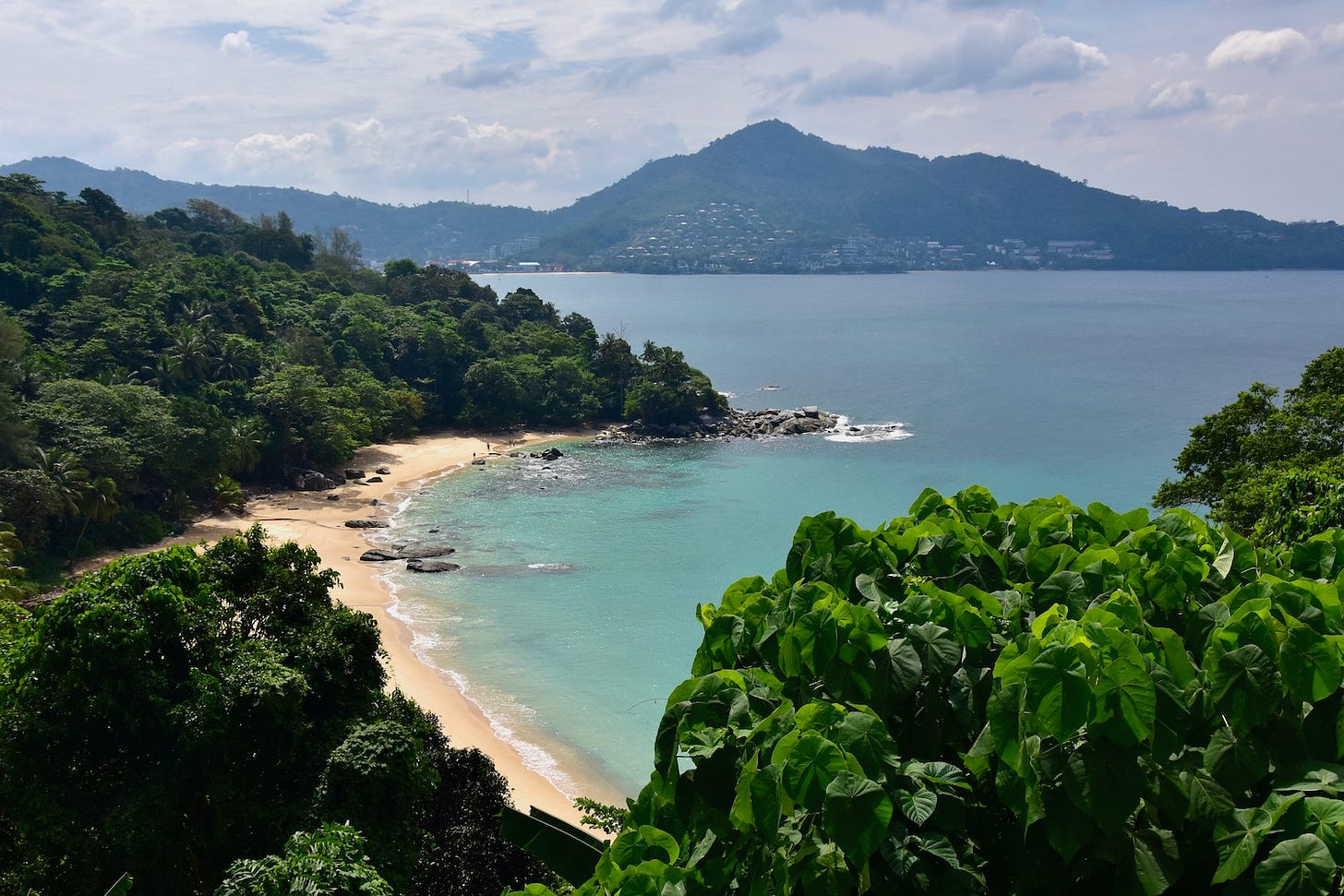T.I.C.D.: Mu Ko Phuket (Part I: Ko Phuket)
Ko Phuket, the largest and most popular island in Thailand, condensed.
Welcome back to the Thai Island & Coastal Directory, a book-in-progress that promises to be the most complete guide to coastal Thailand ever written in English, covering more than 900 islands and all 24 coastal provinces. An upgrade of $5 USD monthly gets you the T.I.C.D. and many other in-depth articles.
T.I.C.D. ticker: So far, we’ve covered 720 islands and 200 notable coastal areas in 39 sections, including this one. (To view all previously published sections, see the welcome page or the working Table of Contents.)
Entering Phuket province…
The only province in Thailand composed entirely of islands, Phuket is best known, of course, for its main island of Ko Phuket, but it also hosts at least 40 smaller islands, many of them open for tourism. This section covers the main island. In the next, we’ll net all of those ‘other islands’ of Phuket province / archipelago.
Mu Ko Phuket
At over 500 sq. km, Ko Phuket is more than twice the size of Thailand’s next biggest island. Having drawn 9.89 million foreign tourists in 2019 and with a recovery now fully underway, Phuket is not only Thailand’s most visited island, but also one of the most heavily touristed places on earth. That same year, Phuket ranked 14th overall — and first among islands — in a Mastercard index charting destination-specific tourist numbers worldwide. In Thailand, only Bangkok gathers more visits than Phuket.
In previous centuries the island stood as a key trading port in a regional economic nexus that attracted much immigration, notably from China, to Phuket and related places in the region, such as Penang, Songkhla and Trang. When the tin-mining boom gave way to rubber tapping and tourism last century, Phuket wasted little time in becoming one of Asia’s most popular beach destinations. Today it remains, I think, the unofficial heart of Thailand’s Andaman subregion.
Ornate shrines and wats join mosques and many attractive Sino-European shophouses from yesteryear in the old town of Mueang Phuket. Much of that architecture now sports trendy cafes and cool street art, with the living heritage of Phuket absolutely surviving alongside the tourism. It shines extra bright during the many festivals, including a Vegetarian Festival that is more known for jarring acts of self-piercing than the Chinese-influenced jay (or vegan) fare.
Ko Phuket’s 600,000-strong community ensures that local Thais, be they Buddhist or Muslim or Christian, are never totally outnumbered by the tourists. The multi-layered expat scene includes a growing number of Russians, while many tourists from China, India and the Middle East help keep the tour buses full. With private schools and quality hospitals joining the beaches and views, it is easy to see why so many outsiders have chosen to live on ‘Jung Ceylon,’ to use a not-so-endearing old name for the island that foreign sailors coined some centuries ago.
But it can seem like too many people want a piece of Phuket, with loads of luxury developments carved into once-pristine hills and an endless stream of land rights / encroachment cases, including several pitting developers against the indigenous Urak Lawoi people of Ko Sirey, who are only trying to stay on their ancestral land N of the provincial capital. The island also has a reputation for scams, including, infamously, involving jet-ski rentals. Real estate tends to be costlier on Ko Phuket than anywhere else in Thailand other than Bangkok’s swankier zip codes.




